Edible & Poisonous Mushrooms
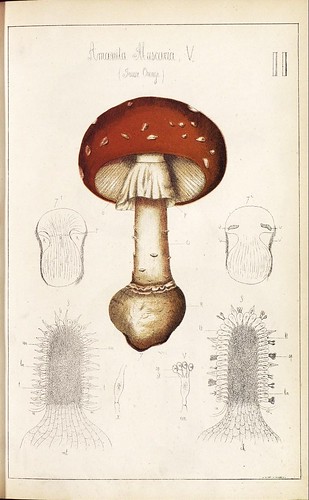
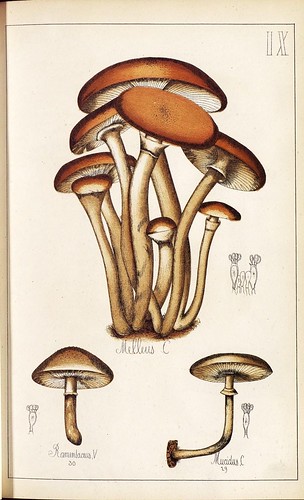

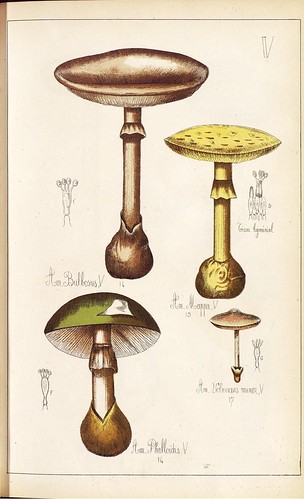

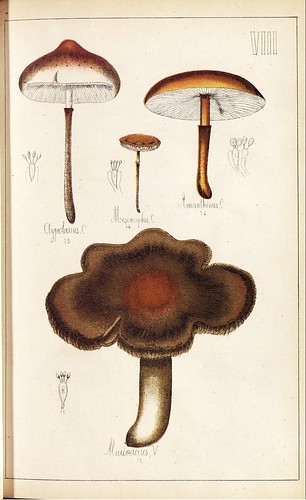

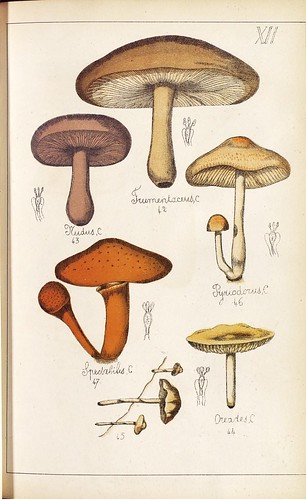
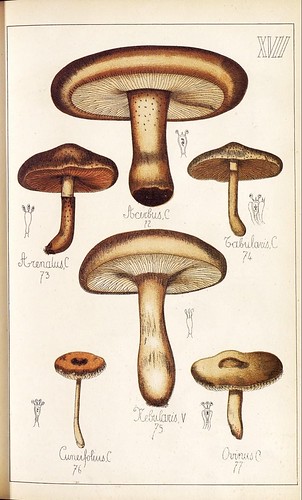
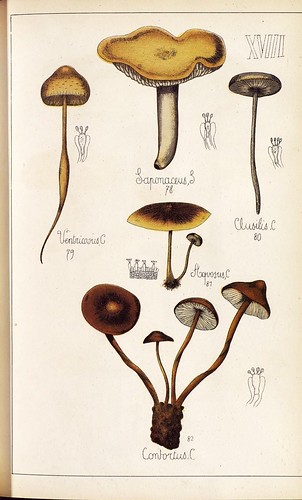

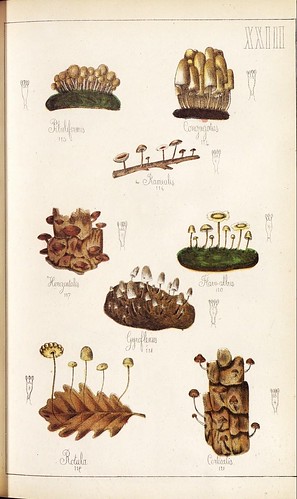

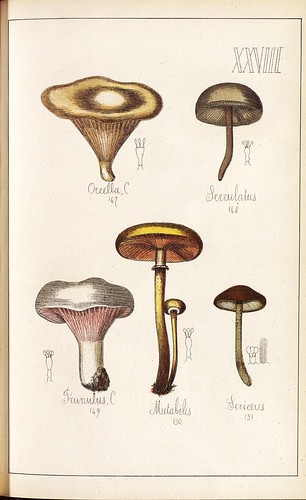
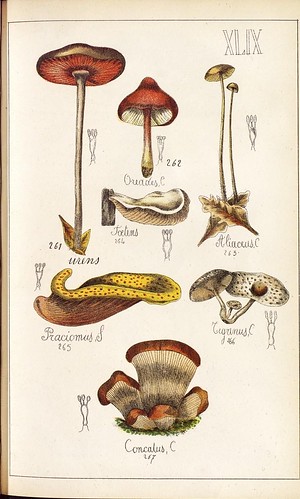

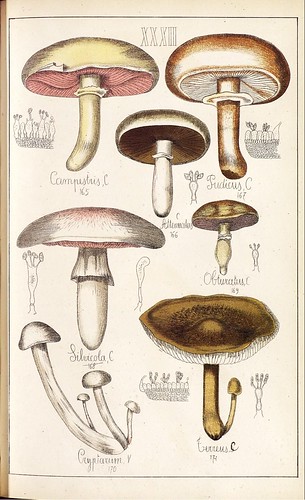
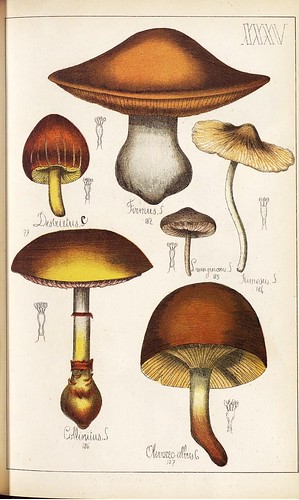
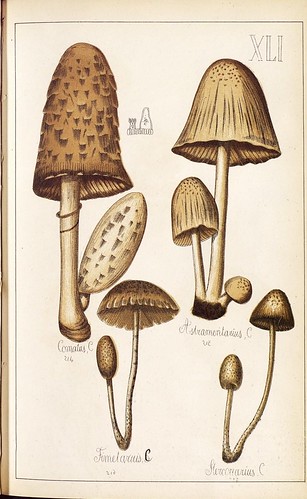
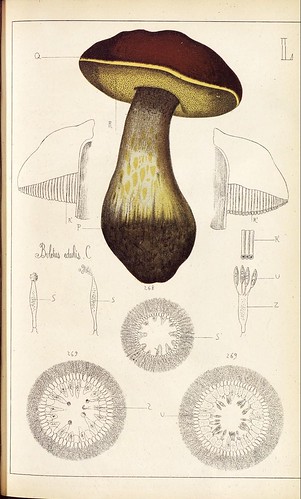
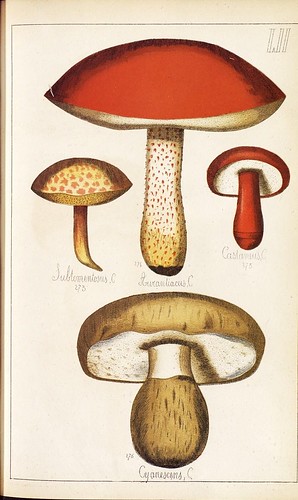
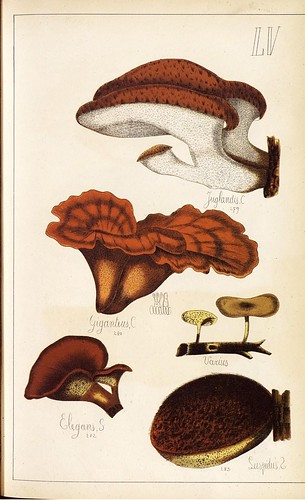

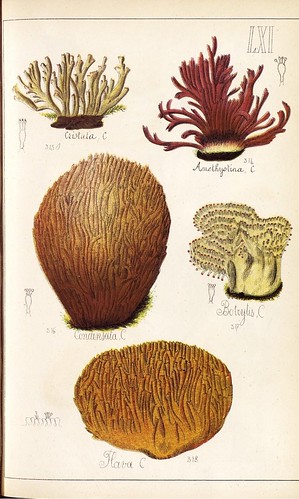
'Histoire Naturelle des Champignons Comestibles et Vénéneux' [The natural history of edible and poisonous mushrooms] by the French pharmacist, Guilliame Sicard, was published in 1883 and is online at Bibliothèque nationale de France. [note the thumbnails link in the sidebar] There are a few more in the set.
Other versions of this book are available (but I think the BNF copy has the best quality illustrations) from the Biodiversity Heritage Library [eg. one; two] and the Internet Archive. [Addit: Amazon has what appears to be a facsimile edition of the book]
The BNF librarian who originally logged Sicard's book was incredibly thorough: not only was there a library stamp on every single page, but they managed to ensure that the stamp was always at least partially covering an illustration. Bravo! I took the liberty of removing these as well as performing some occasional remedial cosmetic work to the background scuffs and splodges. There are doubtless errors in the Genus names in the title tags: either because I misread the handwriting or because the names have been superseded.
'Mushroom' and 'toadstool' are informal words without precise meanings, although in the modern parlance, 'toadstool' tends to be applied to poisonous or suspicious varieties of mushrooms.*
Picking and eating wild mushrooms has something of a romantic dimension and I totally understand the attraction of a half day romp in the forest with a special someone collecting a free evening meal. But there is an enormous body of literature out there devoted to the diagnosis, treatment and case studies of people who became gravely ill or died as a result of mistaking poisonous toadstools for yummy mushrooms.
I've done some really crazy and stupid things in my life [such as: redacted] but there are only two ways that I'd consent to eating the produce collected during a wild mushroom hunt: if I was accompanied by a mycologist - who took the first bite - or if I obtained a degree in mycology myself.
Via the BNF's Gallica blog post: 'La cueillette des champignons en forêt', which lists a number of other fungi-related works in the French National Library (that I haven't seen).
Previously: Forest Fungi and in general, flora.
Die Tode Stuhle -- Mushroom Observer -- Cornell Mushroom blog.




No comments:
Post a Comment